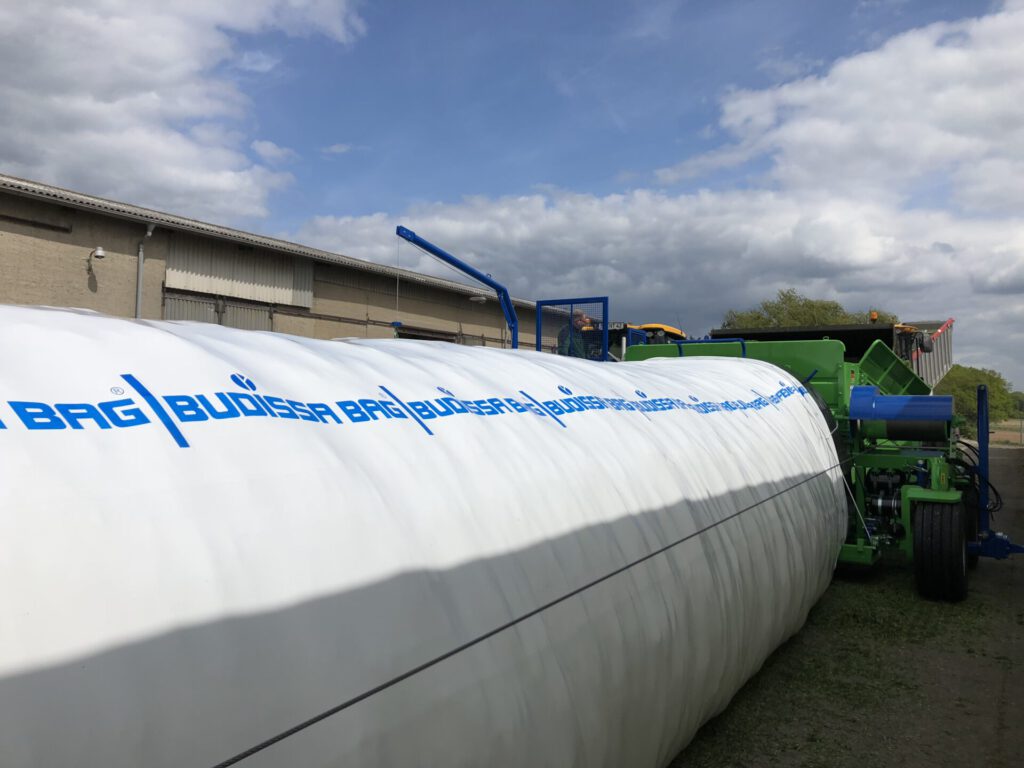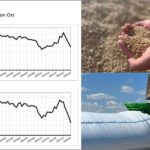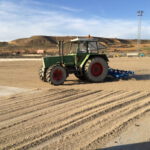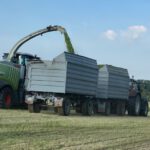Rye gras ensiled in a BUDISSA BAG
Fill gaps in feed availability and build up reserves
The cultivation of green rye as a winter crop for silage as cattle feed or biogas substrate in combination with subsequent maize production increases the total yield per hectar. In times of forage shortages, green rye can fill supply gaps and build up reserves. Rye gras is undemanding, hardy, fast-growing and can use the existing nitrogen very well.
The combination wih corn cultivation requires an adequate water supply. The optimal cutting time is at the beginning of flowering with a DM of 20% and raw fiber content of 20-25%. With a cutting height of 8 cm (raw ash), the rye gras must be mowed with crasher blades, deposited in a swath and chopped on the same day. The DM of 25% is reached after a few hours. Due to the high sugar content (up to 18%), intensive fermentation takes place. Please note, wet (less 20%) silages tend to have higher pH values and with increased crude ash content this leads to butyric acid fermentation. This can be prevented by using appropriate silage additives if the ensiling conditions cannot be met. After 6 weeks of airtight storage in the Budissa Bag, the bag can be opened. If the parameters are adhered to, a high-quality feed is available to them. Crude protein: up to 16% i.d. DM and energy up to 8.6 MJ NEL / kg DM.
If you have any questions, send an email to info@budissa-bag.de


JENS MILDNER
SALES MANAGER
SALES GERMANY AND INTERNATIONAL

















